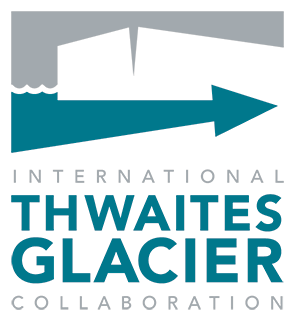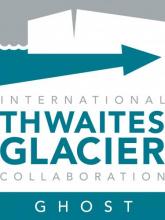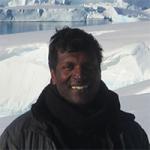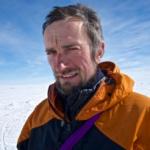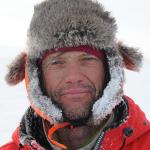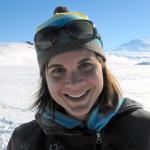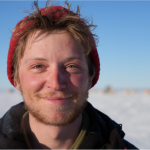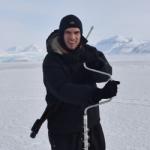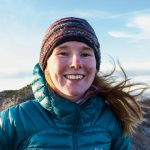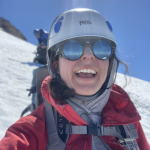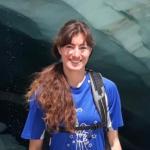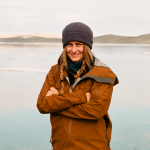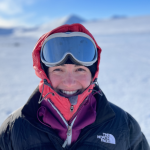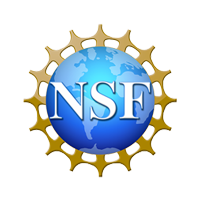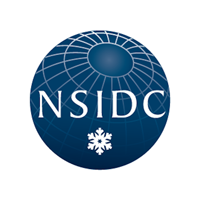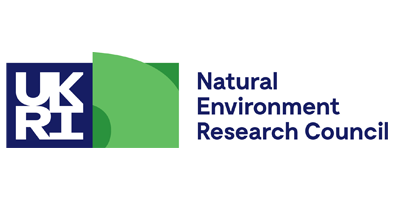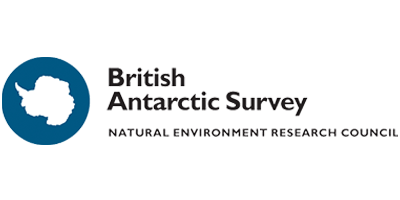Alley, R. B., K. A. Emanuel, and F. Zhang. 2019. Advances in weather prediction. Science 363: 342-344.
|
|
Alley, R., K. Cuffey, and L. Zoet. 2019. Glacial erosion: Status and outlook. Annals of Glaciology 60(80): 1-13.
|
|
Alley, R. B., N. Holschuh, D. R. MacAyeal, B. R. Parizek, L. Zoet, K. Riverman, et al. 2021. Bedforms of Thwaites Glacier, West Antarctica: Character and origin. Journal of Geophysical Research: Earth Surface, 126, e2021JF006339.
|
|
Alley, R.B., W. Li, B.R. Parizek, and F. Zhang. 2019. Evaluation of ice-stream model sensitivities for parameter estimation. Earth and Planetary Science Letters 516: 49-55.
|
|
Bodart, J.A., R. G. Bingham, D. A. Young, J. A. MacGregor, D. W. Ashmore, E. Quartini, A. S. Hein, D. G. Vaughan, and D. D. Blankenship. 2023. High mid-Holocene accumulation rates over West Antarctica inferred from a pervasive ice-penetrating radar reflector. The Cryosphere TC, 17, 1497–1512. |
|
Borthwick, L., A. Muto, S. Anandakrishnan, K. Tinto, R. Agnew, A. Brisbourne, R. Schlegel, S. Killingbeck, B. Kulessa, R. Alley, A. Willet, and S. Melton. 2025. Rift-related sedimentary basin and deeper-seated mafic intrusions modeled beneath Thwaites Glacier, West Antarctica: Influence on glacier dynamics. Journal of Geophysical Research: Solid Earth, 130, e2025JB031716. |
|
Christie, F. D. W., E. J. Steig, N. Gourmelon, S. F. B. Tett, and R. G. Bingham. 2023. Inter-decadal climate variability induces differential ice response along Pacific-facing West Antarctica. Nature Communications 14:93.
|
|
Clyne, E. R., S. Anandakrishnan, A. Muto, R. B. Alley, and D. E. Voigt. 2020. Interpretation of topography and bed properties beneath Thwaites Glacier, West Antarctica using seismic reflection methods. Earth and Planetary Science Letters 550, 116543.
|
|
Clyne, Elisabeth. Geophysical Investigation of Basal and Hydrologic Conditions in Glaciers and Ice Shelves. 2021. The Pennsylvania State University ProQuest Dissertations Publishing 2021. 28841701.
|
|
Hoffman, A. O., K. Christianson, D. Shapero, B. E. Smith, and I. Joughin. 2020. Brief communication: Heterogenous thinning and subglacial lake activity on Thwaites Glacier, West Antarctica. The Cryosphere 14, 4603–4609.
|
|
Holschuh, N., K. Christianson, J. Paden, R.B. Alley, and S. Anandakrishnan. 2020. Linking postglacial landscapes to glacier dynamics using swath radar at Thwaites Glacier, Antarctica. Geology 48 (3): 268–272.
|
|
Jordan, T.A., S. Thompson, B. Kulessa, and F. Ferraccioli. 2023. Geological sketch map and implications for ice flow of Thwaites Glacier, West Antarctica, from integrated aerogeophysical observations. Science Advances Vol 9, Issue 22. |
|
Karplus, M.S., T.J. Young, S. Anandakrishnan, J.N. Bassis, E.H. Case, A.J. Crawford, A. Gold, L. Henry, J. Kingslake, A.A. Lehrmann, P.A. Montano, E.C. Pettit, T.A. Scambos, E.M. Sheffield, E.C. Smith, M. Turrin, and J.S. Wellner. 2022. Strategies to Build a Positive and Inclusive Antarctic Field Work Environment. Annals of Glaciology 63, no. 87–89: 125–31. |
|
Koellner, S., B. R. Parizek, R. B. Alley, A. Muto, and N. Holschuh. 2019. The impact of spatially-variable basal properties on outlet glacier flow. Earth and Planetary Science Letters 515: 200-208.
|
|
Koellner, S., B.R. Parizek, R.B. Alley, A. Muto and N. Holschuh. 2019. The impact of spatially-variable basal properties on outlet glacier flow. Earth and Planetary Science Letters 515: 200-208.
|
|
Muto, A., R. Alley, Parizek, B. and Anandakrishnan, S. 2019. Bed-type variability and till (dis)continuity beneath Thwaites Glacier, West Antarctica. Annals of Glaciology 1-9.
|
|
Muto, A., S. Anandakrishnan, R. Alley, H. Horgan, B. Parizek, S. Koellner, K. Christianson, and N. Holschuh. 2019. Relating bed character and subglacial morphology using seismic data from Thwaites Glacier, West Antarctica. Earth and Planetary Science Letters 507, 199-206.
|
|
Muto, A., S. Anandakrishnan, R.B. Alley, H.J. Horgan, B.R. Parizek, S. Koellner, K. Christianson, and N. Holschuh. 2019. Relating bed character and subglacial morphology using seismic data from Thwaites Glacier, West Antarctica. Earth and Planetary Science Letters 507: 199-206.
|
|
Ockenden, H., R. G. Bingham, A. Curtis, and D. Goldberg. 2022. Inverting ice surface elevation and velocity for bed topography and slipperiness beneath Thwaites Glacier. The Cryosphere 16, 3867–3887.
|
|
Ockenden, H., R.G. Bingham, A. Curtis, and D. Goldberg. 2023. Ice-Flow Perturbation Analysis: A Method to Estimate Ice-Sheet Bed Topography and Conditions from Surface Datasets. Journal of Glaciology, 2023, 1–10. |
|
Post, E., R. B. Alley, T. R. Christensen, M. Macias-Fauria, B. C. Forbes, M. N. Gooseff, A Iler, J. T. Kerby, K. L. Laidre, M. E. Mann, J. Olofsson, J. C. Stroeve, F. Ulmer, R. A. Virginia, and M. Wang. 2019. The polar regions in a 2°C warmer world. Science Advances 5:12.
|
|
Riverman, K., S. Anandakrishnan, R. Alley, N. Holschuh, C. Dow, A. Muto, B. Parizek, K. Christianson, and L. Peters. 2019. Wet subglacial bedforms of the NE Greenland Ice Stream shear margins. Annals of Glaciology 60(80), 91-99.
|
|
Zoet, L. K., J. E. Rawling III, J. B. Woodard, N. Barrette, and D. M. Mickelson. 2021. Factors that contribute to the elongation of drumlins beneath the Green Bay Lobe, Laurentide Ice Sheet. Earth Surface Processes and Landforms 46:13 2540-2550.
|
|
Zoet, L. K., M. J. Ikari, R. B. Alley, C. Marone, S. Anandakrishnan, B. M. Carpenter, et al. 2020. Application of constitutive friction laws to glacier seismicity. Geophysical Research Letters, 47, e2020GL088964.
|
|
